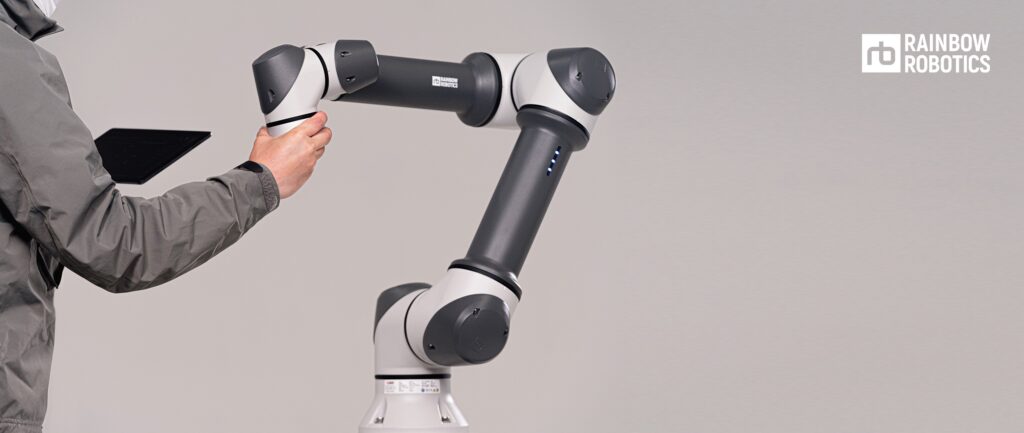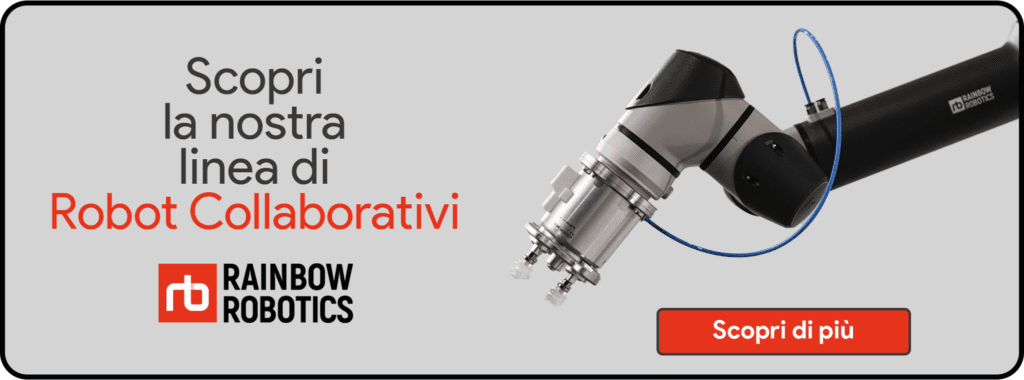Collaborative Robots or Cobot Robot
Collaborative robots represent the new frontier of the fourth industrial revolution. However, it is not entirely clear to many what so-called “cobots” really are, what are the uses and what is collaborative robotic technology. Although this technology has already been on the market for over 10 years and their diffusion in companies is growing, several questions remain about how a cobot works, the possible applications and the many possibilities of integration into production processes. So let’s try to explain some of the most important aspects of this type of robot and what robots do in collaborative robotics.

What are Collaborative Robots?
The power and precision of robots represents an extremely important strength point in any production context. But it is the combination with the problem-solving ability of humans that makes greater productivity possible.
Collaborative robots are anthropomorphic arms with movement on six axes. They differ from other industrial robots for their extreme safety which allows them to work in close contact with the human operator without protective barriers. A real sharing of spaces and production objectives to improve and speed up performance and production quality, as well as the quality of the working environment and human work.
The so-called cobots are therefore compact and safe tools, but above all versatile and easy to use thanks to the easy programming, and the rapid integration into the existing production line. This aspect is of primary importance as, in addition to the immediate possibility of making the plant operational, it allows for a rapid economic return on the investment.
How do cobots work?
The main advantage of collaborative robots is the ease of programming. Cobots can be programmed either via touch screen tablet or by manually moving the robotic arm in a path of points. The arm records the coordinates that the cobot will need to repeat it. The sensors on the cobot register even the most imperceptible movements which, in any case, can be reprogrammed as needed.
An example of welding cobot programming:
What is collaborative robotics
If the fourth industrial revolution has redefined the relationship between man and machine in modern production lines, the evolution of companies into Smart Factory allows us to take a further step forward: operators and robots can work together and in total safety thanks to collaborative robotics. Cobot robots will take care of the most repetitive, burdensome and risky tasks. Operators, on the other hand, will be able to carry out more specialized activities or collaborate with the robot to improve the speed, result and quality of the work.
What is the difference between cobots and robots?
Not all industrial robots can be called collaborative. In fact, cobots are characterized by:
- Maximum versatility and adaptability: the same robot with a few appropriate interventions can be used in various applications: from welding to machine tending, logistics, assembly, gluing and much more.
- Absolute Security: No need to add protective cages and safety zones around the cobot. This simplifies and speeds up operations while maintaining maximum safety for the operator.
- Simplified programming: requires no coding and no pushbutton panel, ensuring faster start-up times for the user.
- Easy integration with the existing production line: the strong adaptability and versatility as well as the ease of installation and configuration, allow easy adaptation with the production processes.
What are collaborative robots used for?
The applications of collaborative robots are endless: they can be used to automate many operations thanks to easy customization and integration with tools suited to the most diverse functions. To get an overview, we invite you to visit the appropriate page of our site dedicated to some of the applications of cobots. There are photos and videos to inspire you.
Collaborative Robots: Pricing and Investment
The price of a collaborative robot can vary a lot because it depends on the accessories that are mounted. In general, the strong customization affects a lot on the final price. Another factor is also the supported weight range and the strength of which the arm is capable.





Leave a Reply
You must be logged in to post a comment.